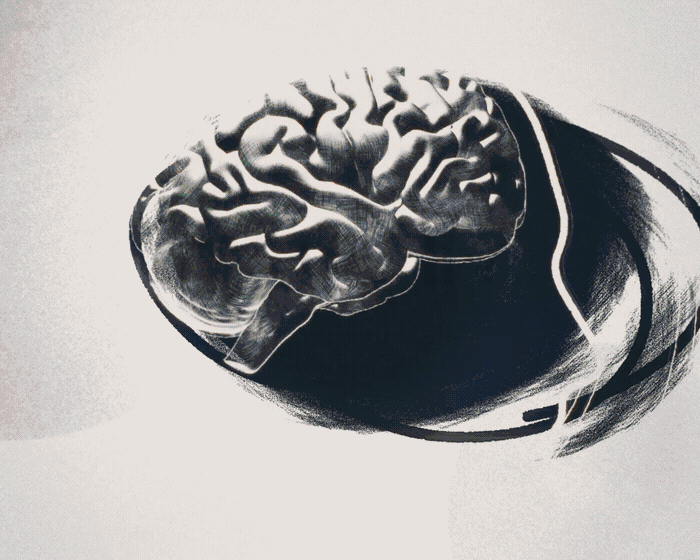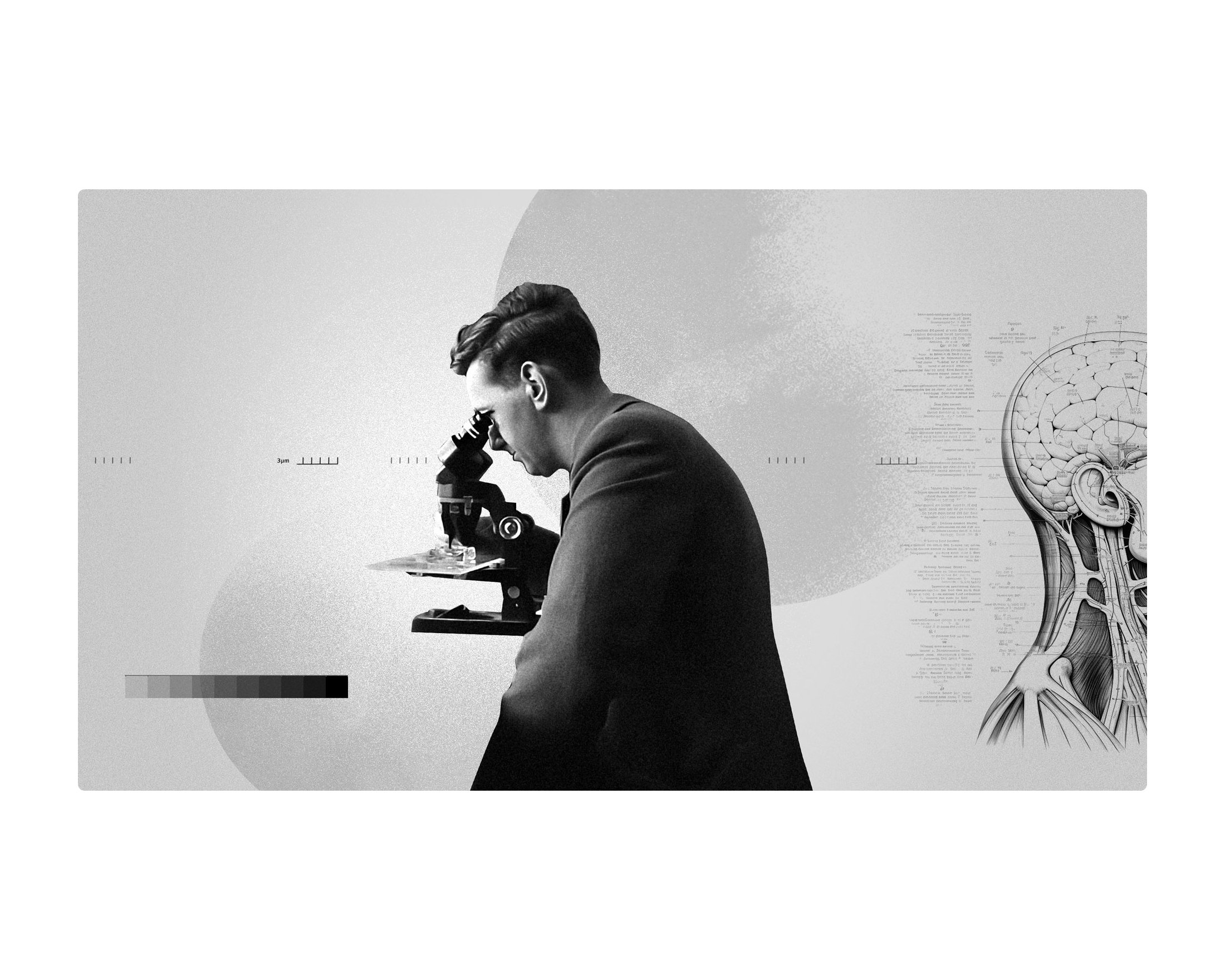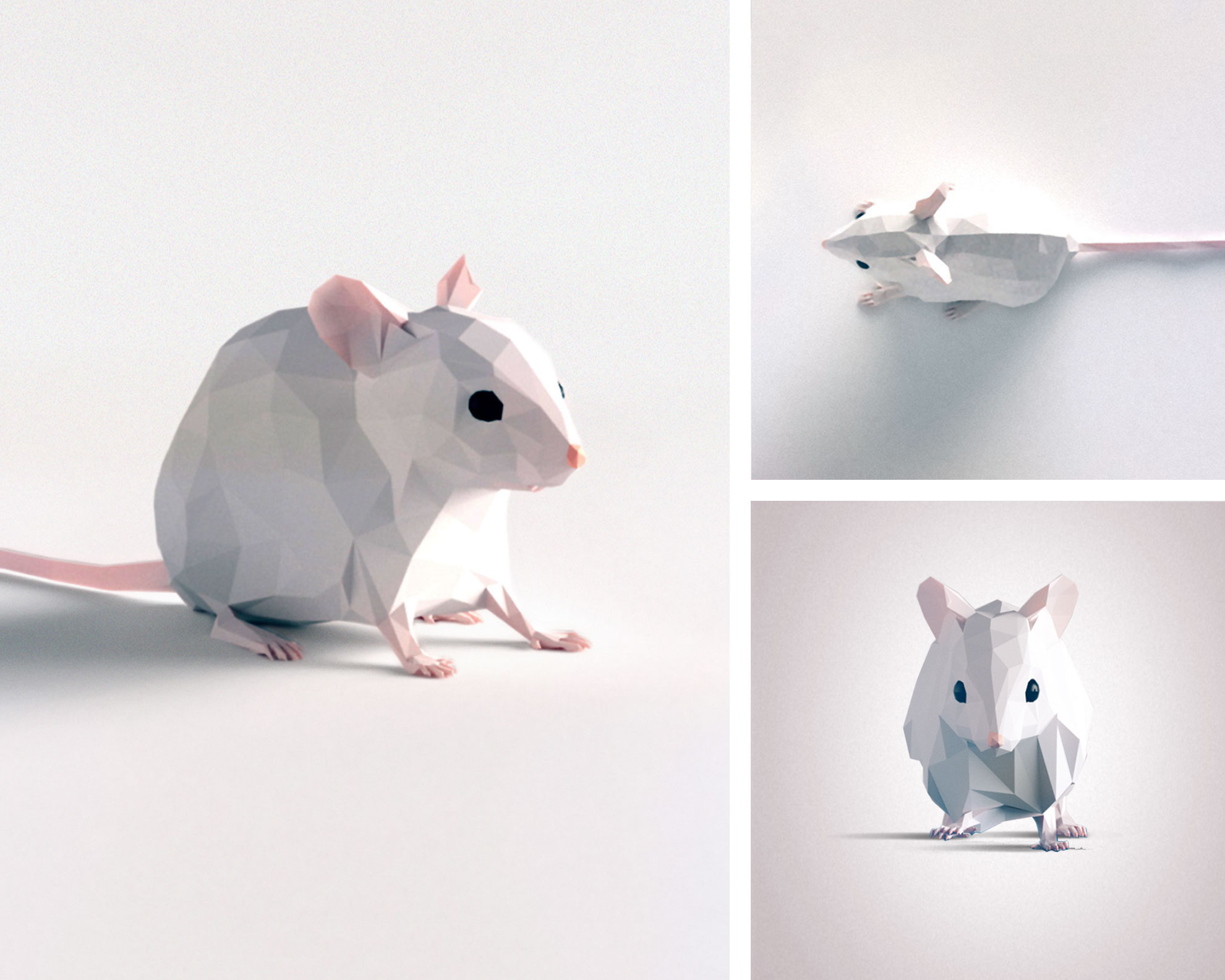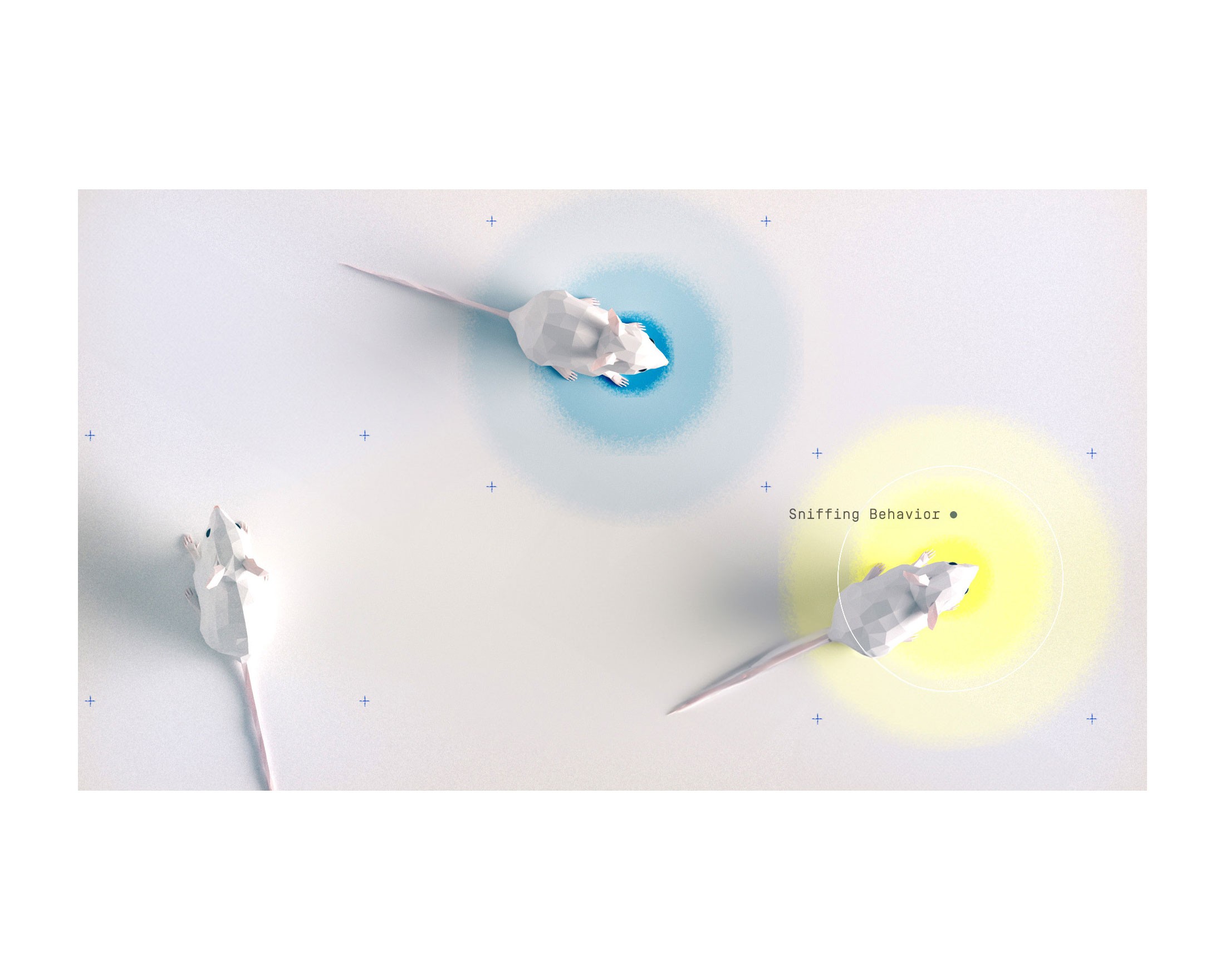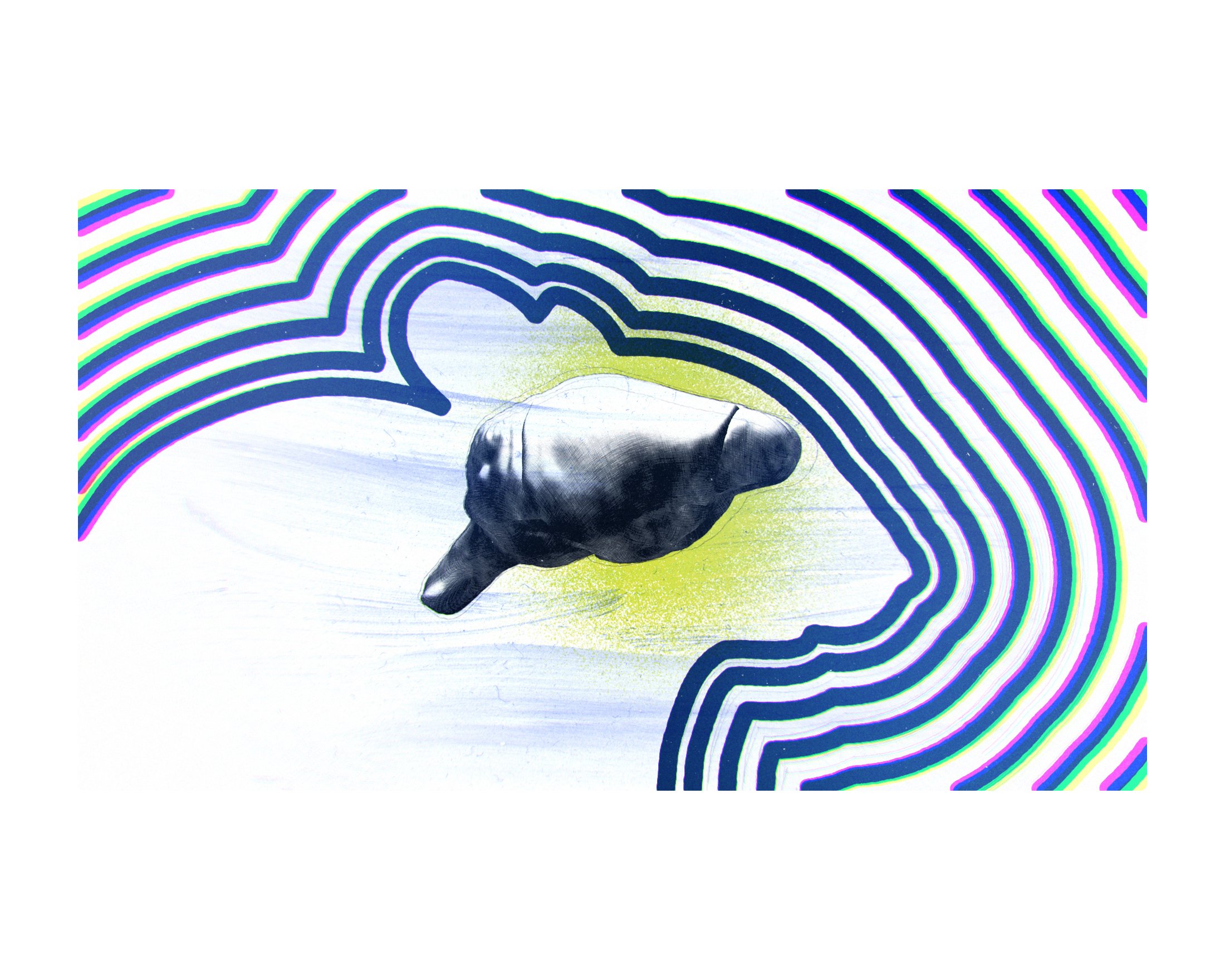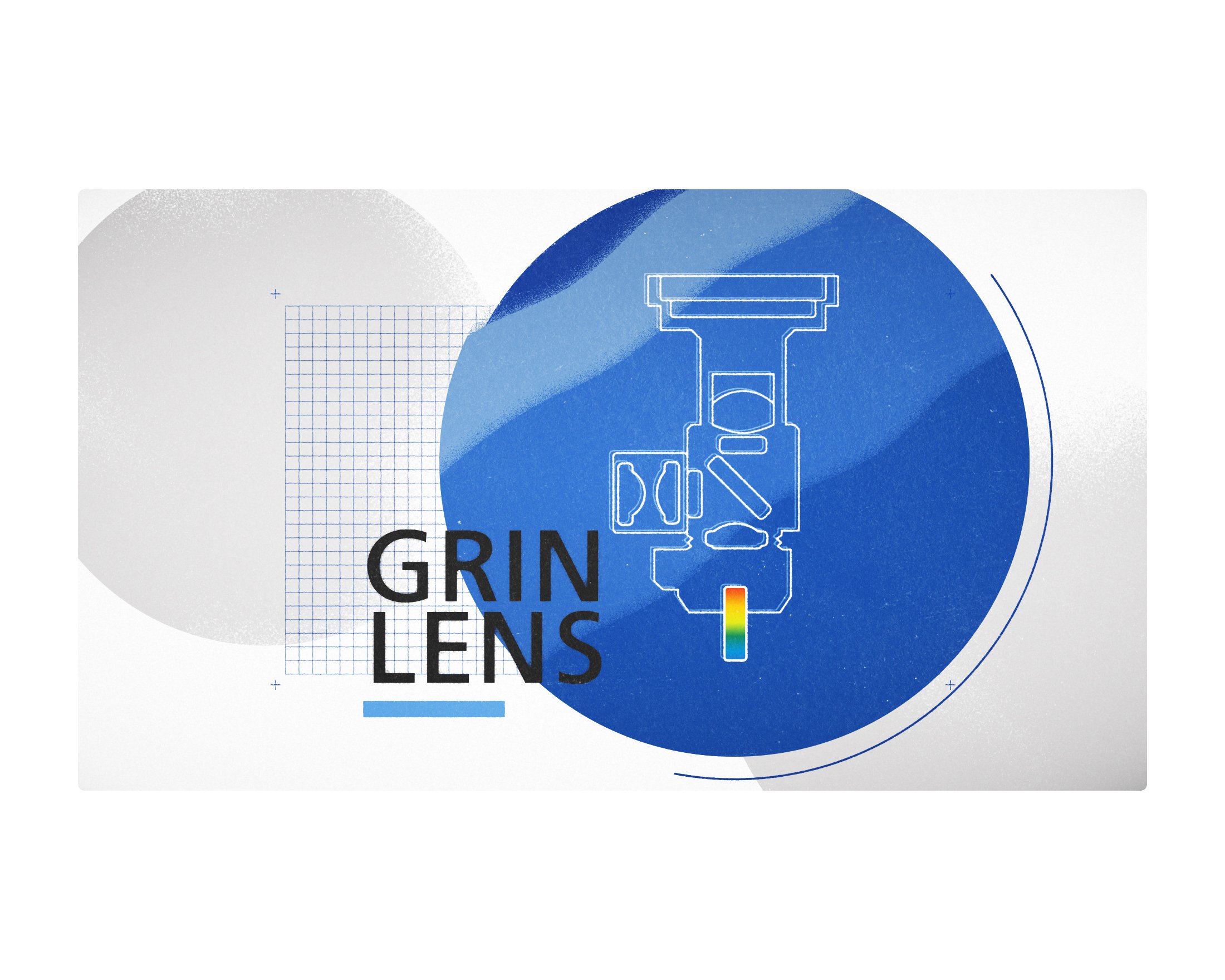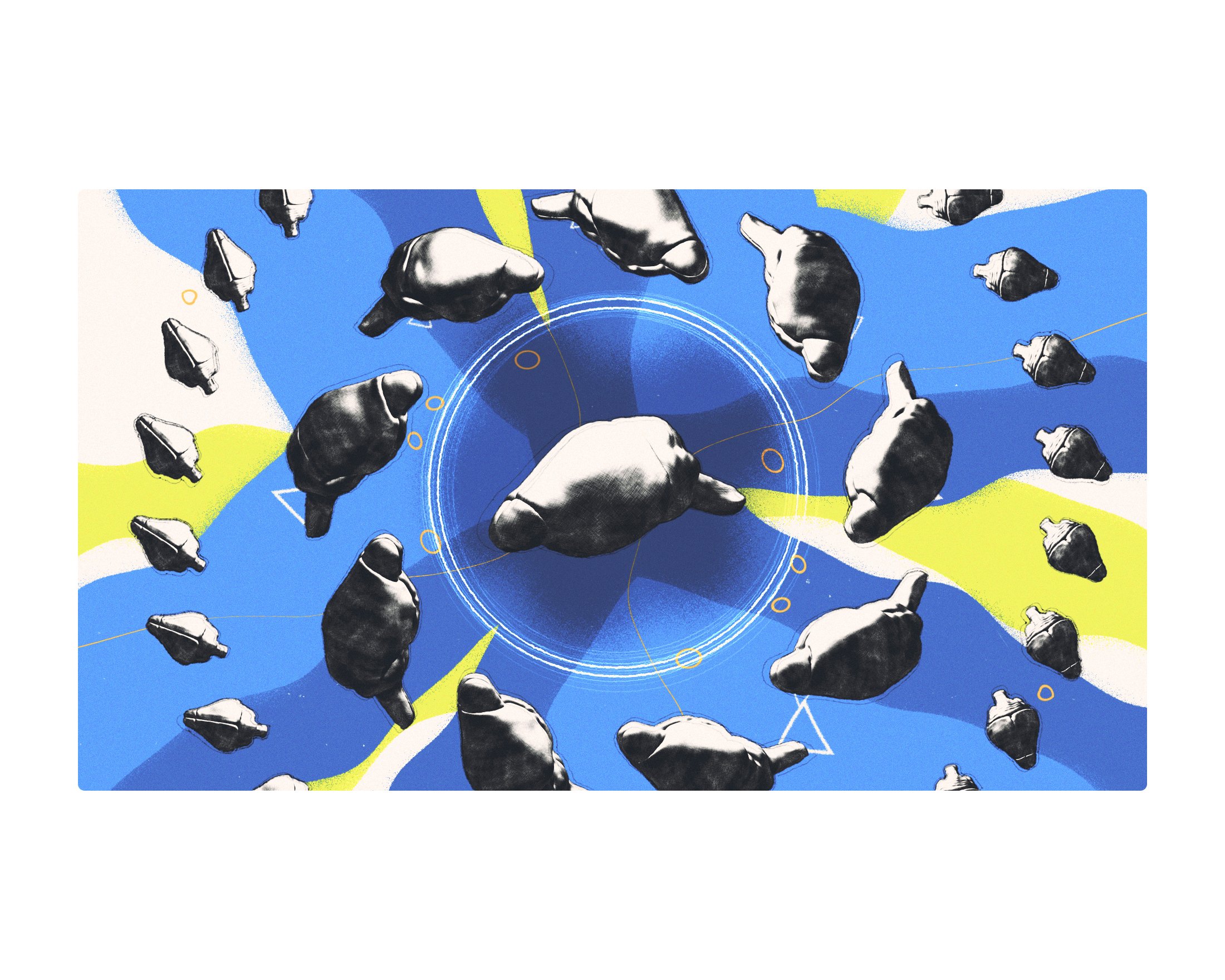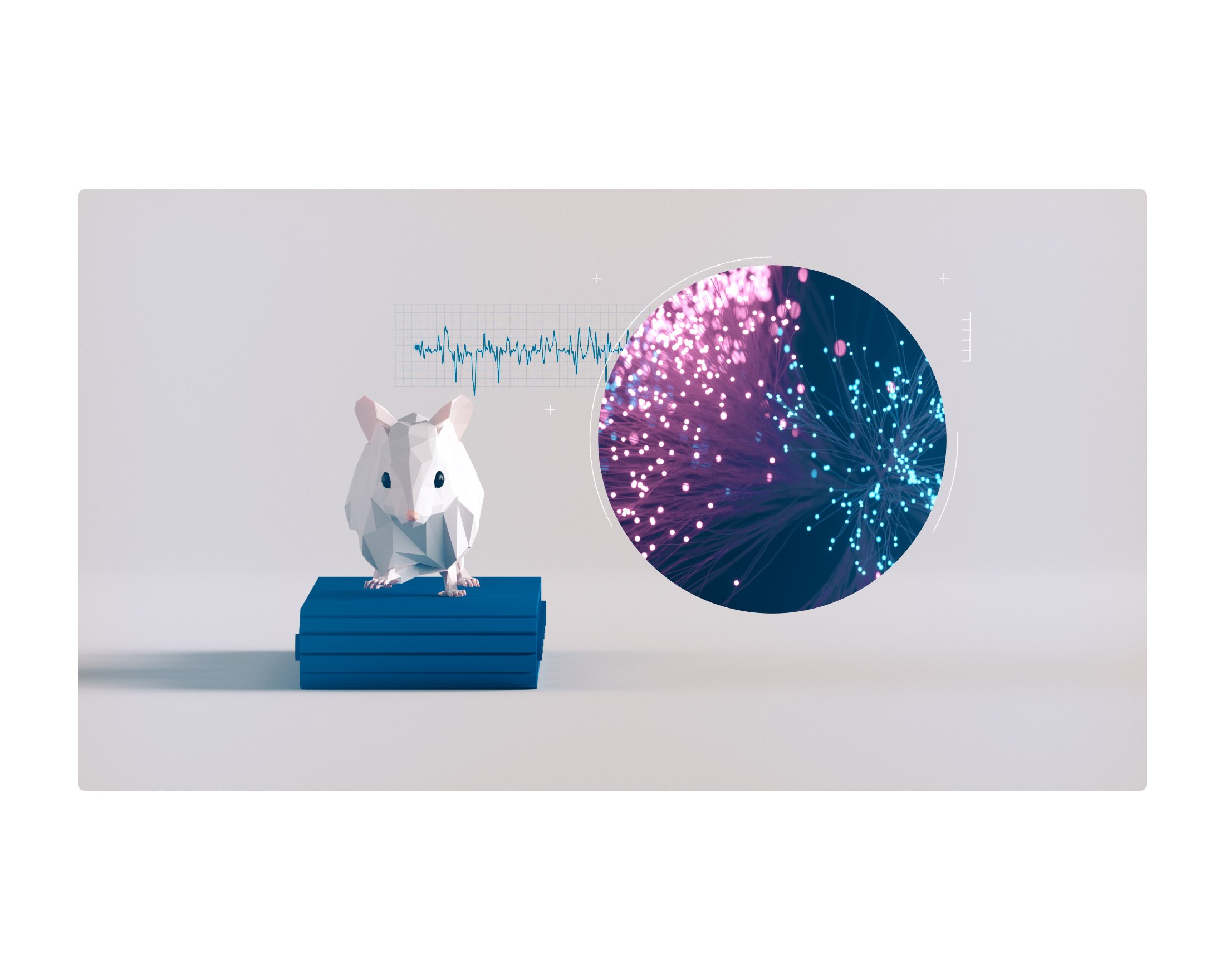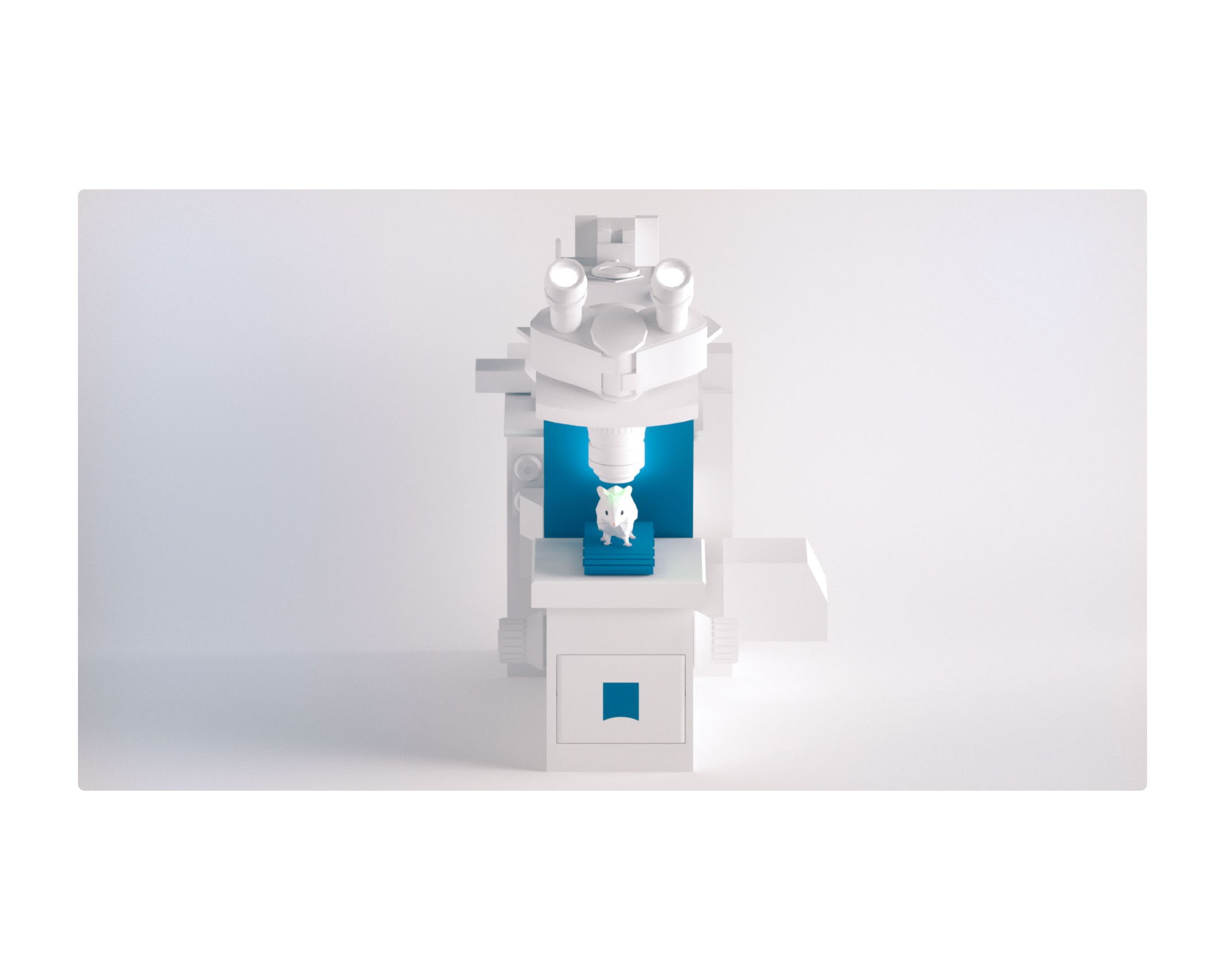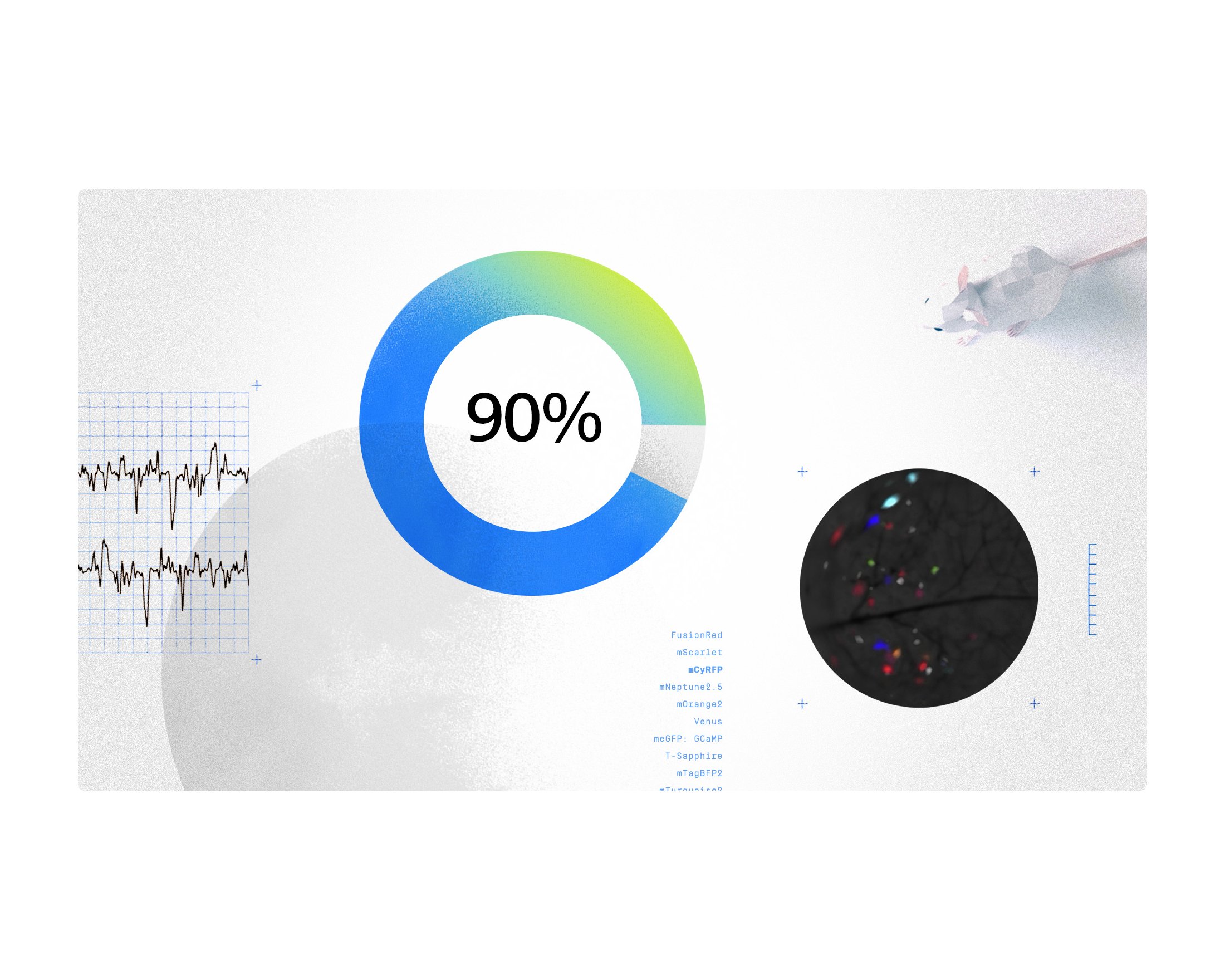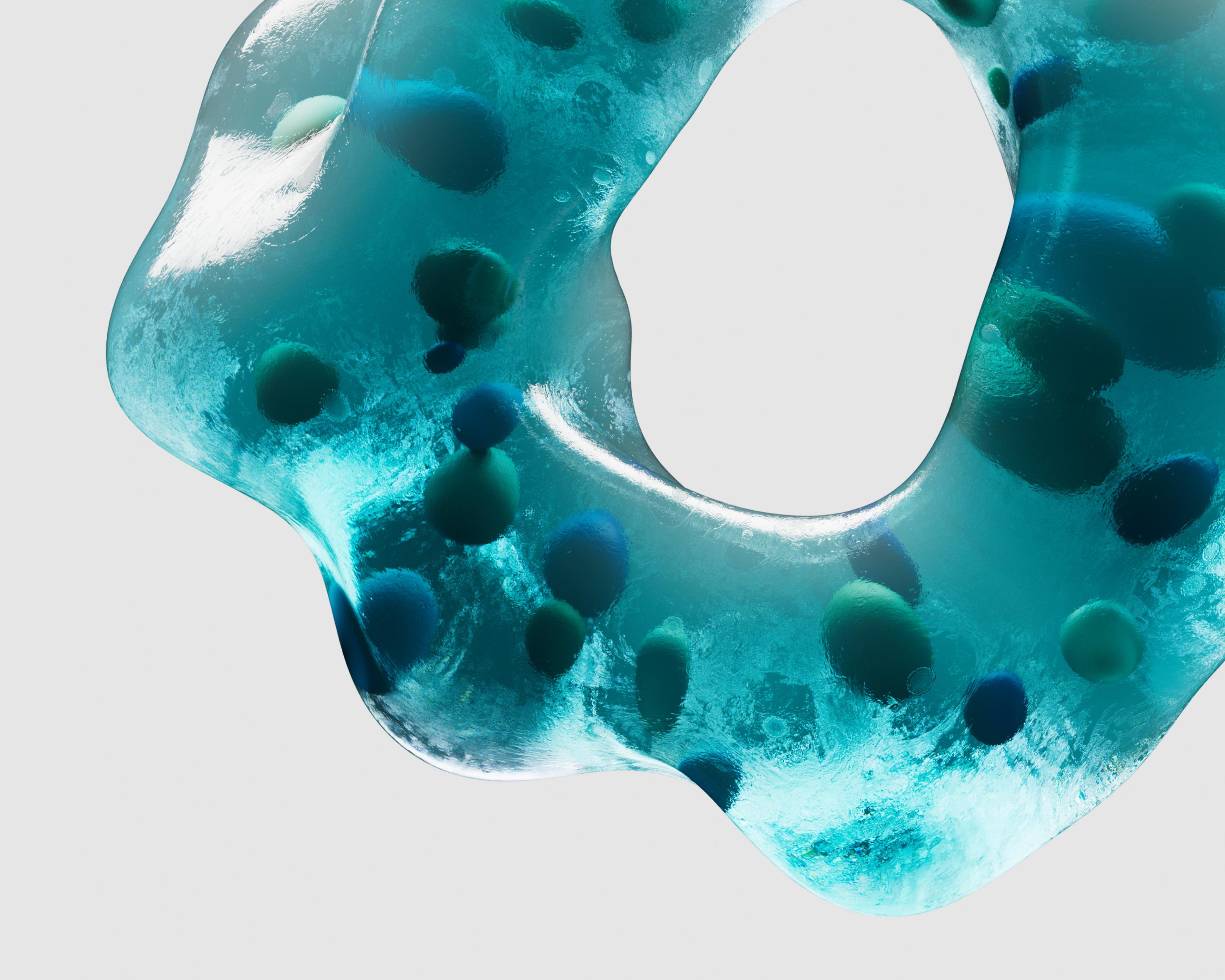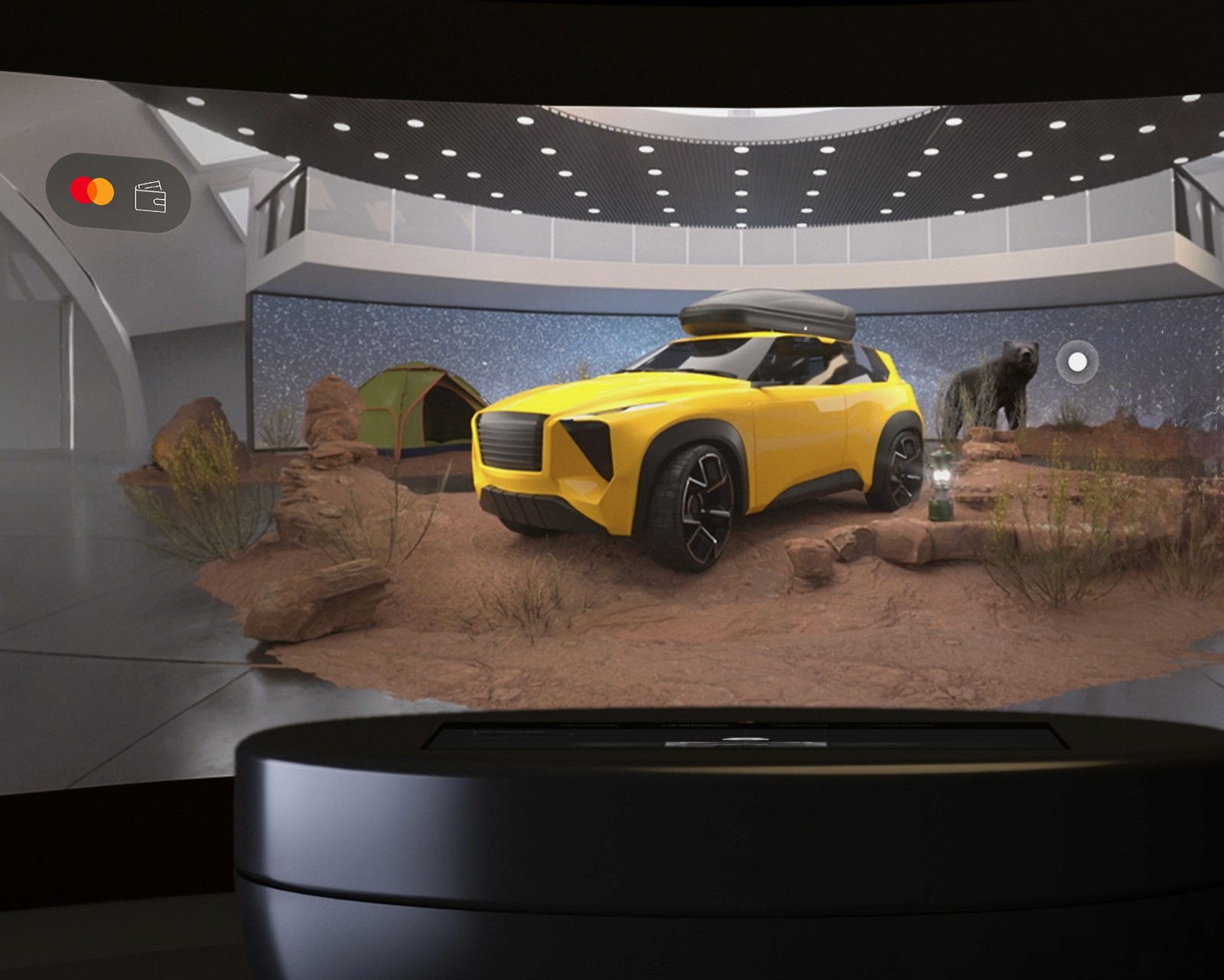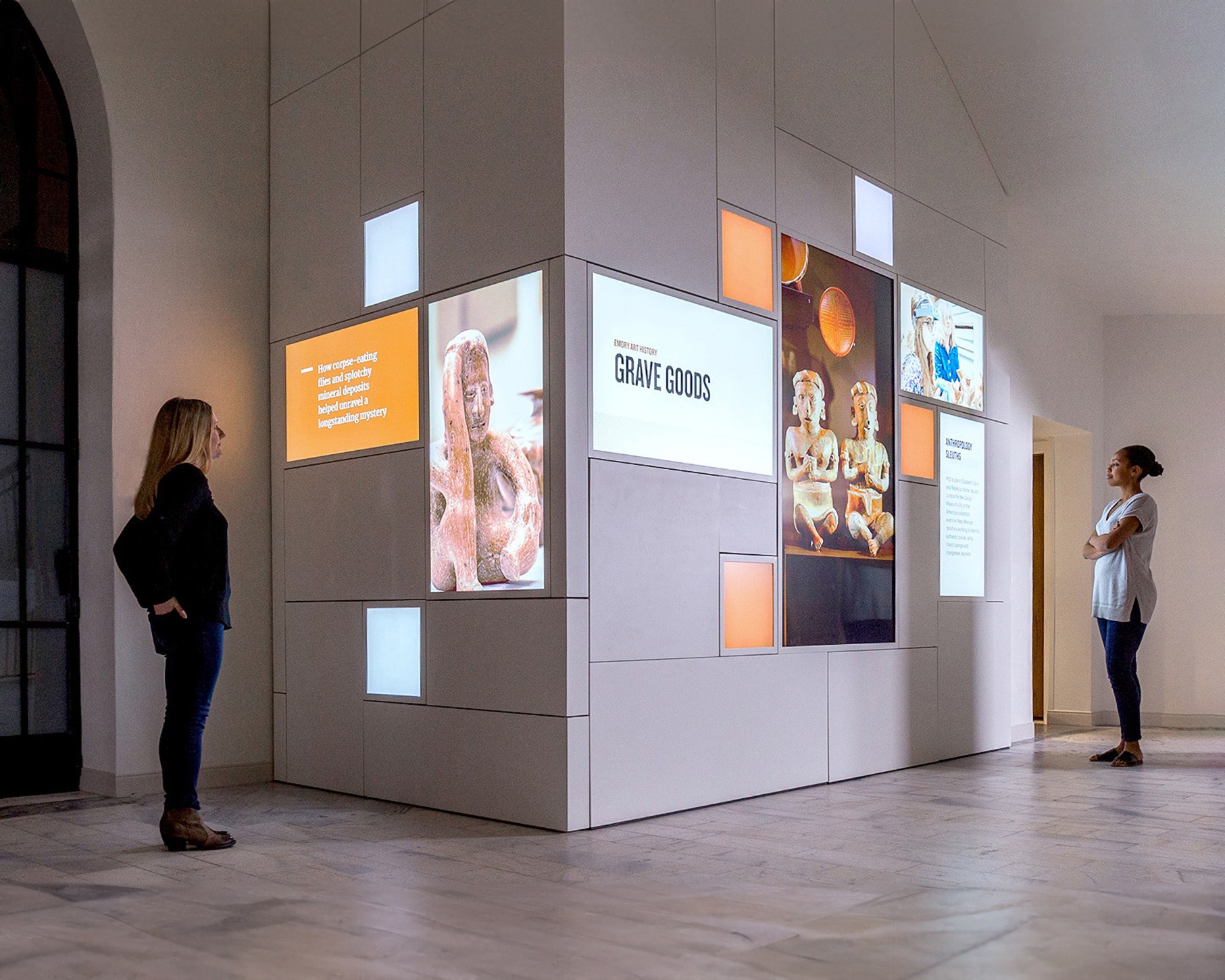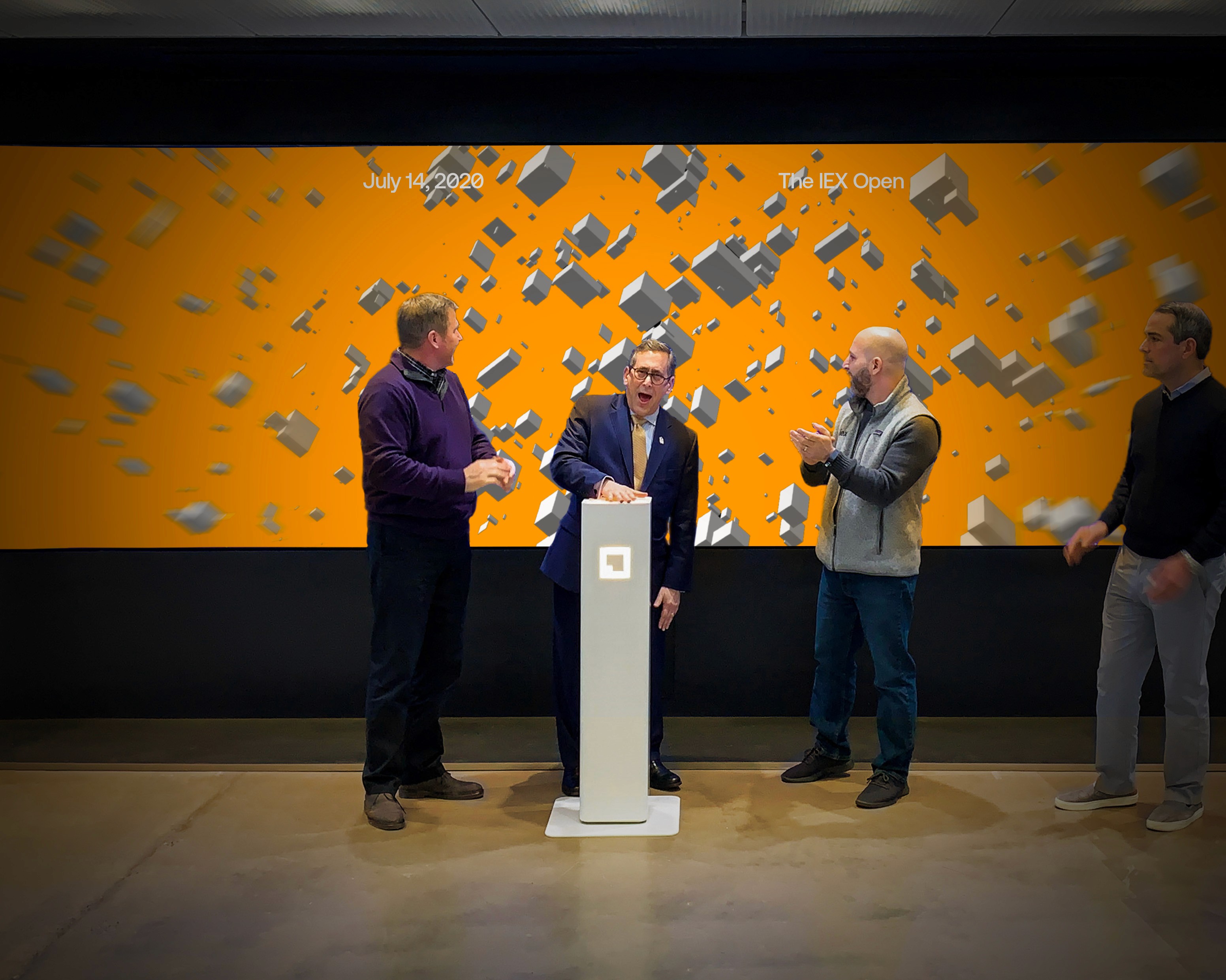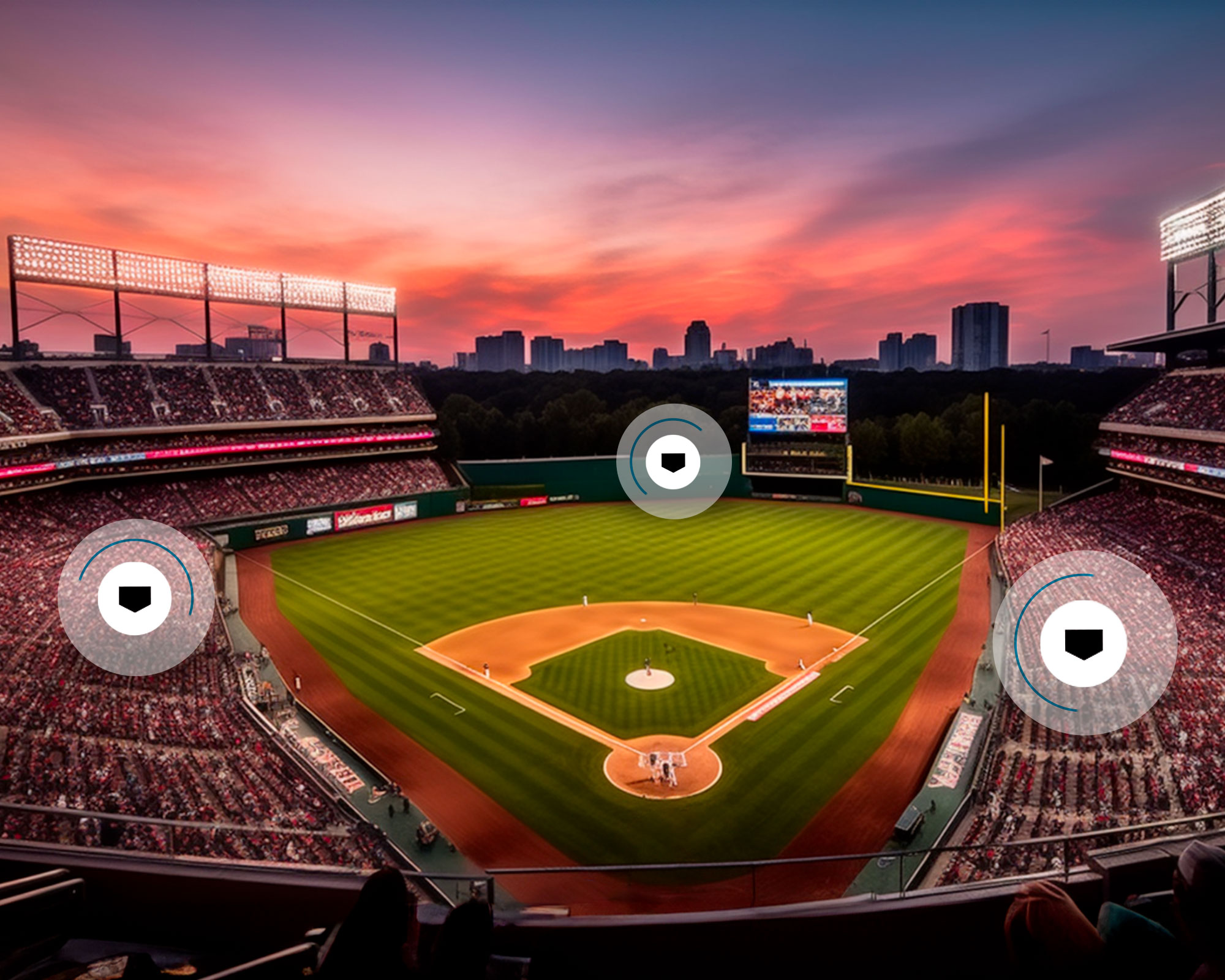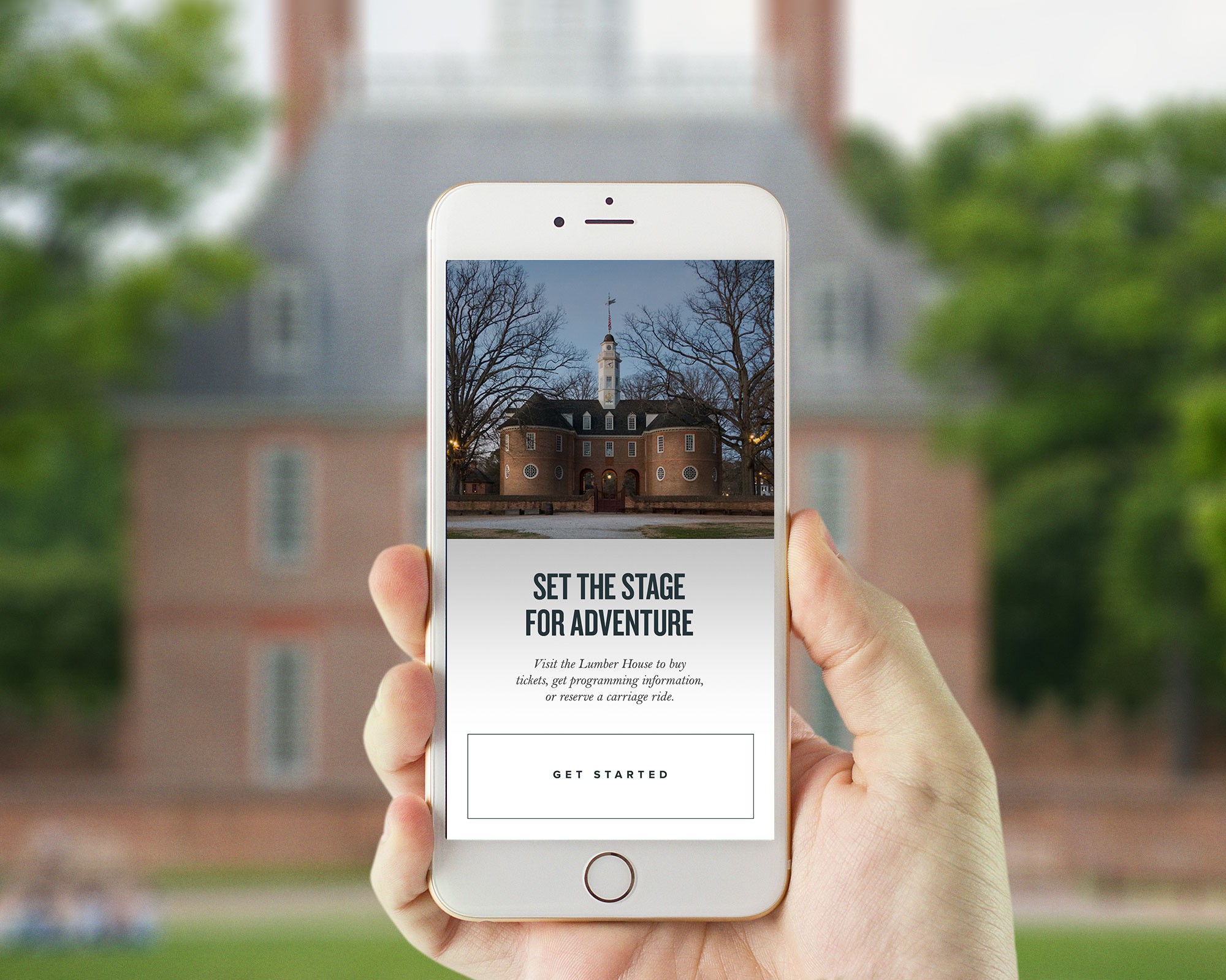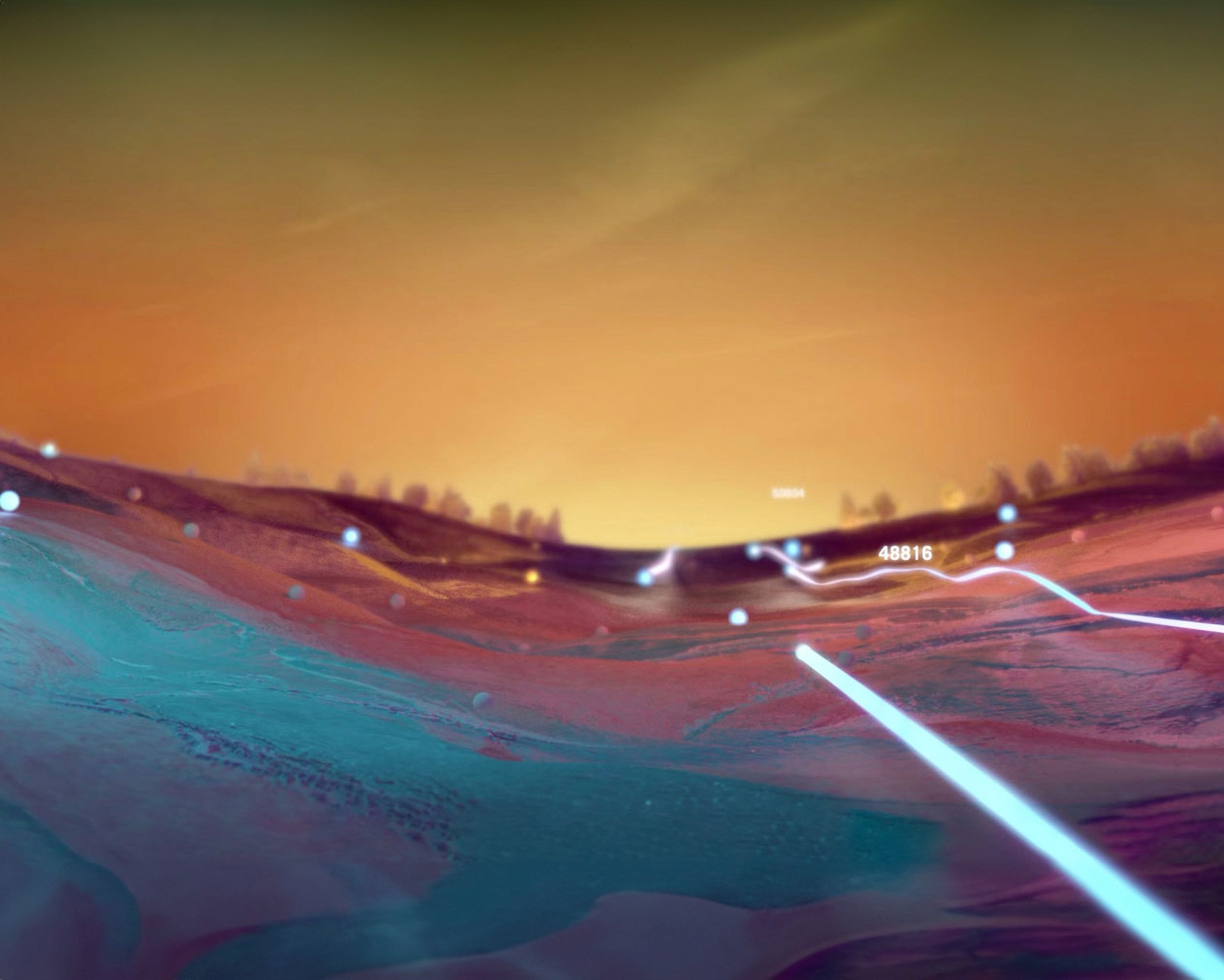problem
ZEISS Microscopy needed to communicate a significant scientific breakthrough that allows researchers to identify up to 10 different cells in a mouse’s brain through color coding, a vast improvement over the previous black-and-white imaging methods. This innovation would play a crucial role in personality disorder research.
solution
We created a short, animated video that clearly explains the research and its implications to both neuroscientists and the general public. The animation visually represented the transition from black-and-white to vibrant color coding, emphasizing the breakthrough. The video served as an educational tool for ZEISS’s marketing initiatives.
We began by developing a storyboard, refining character designs, and crafting a script that accurately represented the scientific story. One of the key tasks was to create the look and feel of the main character—a mouse. After a detailed look development phase, we opted for a low poly style to give the character a modern, yet approachable appearance. This visual approach allowed the complexity of the science to be conveyed clearly without overwhelming the audience. Throughout the process, we collaborated with ZEISS to ensure that the animation portrayed the breakthrough accurately while remaining accessible.
Once the style and direction were approved, we proceeded with animating the video, recording the voiceover, and selecting a fitting background track to enhance the overall experience. The low poly mouse, along with the vibrant color transitions, successfully illustrated the transformation from traditional black-and-white imaging to ZEISS’s innovative color-coded technology. This dynamic video effectively showcased ZEISS’s leadership in scientific discovery, resonating with both experts and the general public.
01
02
03
04
05
06
07
08
09
10
11
12
see also
